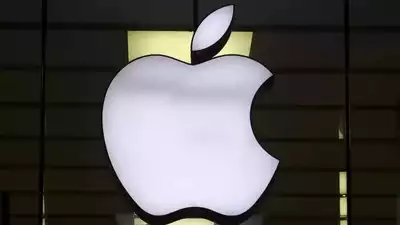
Apple, renowned for its groundbreaking marketing strategies, encountered an unexpected storm with its recent advertisement for the iPad Pro, titled “Crush.” This ad, which aimed to showcase the device’s capabilities, inadvertently stirred controversy and led to a rare public apology from the tech giant. In this extended analysis, we’ll delve deeper into the ad itself, explore the reasons behind Apple’s apology, and address some frequently asked questions surrounding this contentious issue. **The “Crush” Ad: What Did It Show?** The “Crush” ad opens with a series of visually captivating scenes, featuring various symbols of human creativity: musical instruments, paint cans, an ’80s arcade video game, and even a bust of a human head. These objects are dramatically subjected to the force of a giant hydraulic press, symbolizing the destruction of traditional creative tools. Finally, as the metal slabs of the press lift, the new iPad Pro is revealed, positioned as the epitome of innovation and creativity. **Why Did Apple Apologize?** The backlash against the “Crush” ad was swift and intense. Viewers criticized Apple for seemingly glorifying the destruction of artistic expression and human creativity. Many felt that the ad conveyed a tone of insensitivity, particularly given the current climate of concerns about job displacement due to technological advancements. Additionally, the juxtaposition of destroying traditional creative tools to promote a digital device struck a discordant note with audiences, leading to accusations of poor taste. In response to the mounting criticism, Apple issued a public apology through its VP of marketing communications, Tor Myhren. Myhren emphasized Apple’s unwavering commitment to celebrating creativity and expressed regret for the ad’s failure to resonate with the company’s values. By acknowledging their misstep and expressing genuine remorse, Apple demonstrated a willingness to listen to feedback and take corrective action.

Features of the New iPad Pro
The groundbreaking new iPad Pro boasts an incredibly thin and lightweight design, setting new standards for portability and performance. Available in sleek silver and space black finishes, the latest iPad Pro is offered in two sizes: a spacious 13-inch model and an ultra-portable 11-inch model.
Both sizes feature the world’s most advanced display — the revolutionary Ultra Retina XDR display, which incorporates cutting-edge tandem OLED technology to deliver an unparalleled visual experience. Powered by the all-new M4 chip, the next generation of Apple silicon, the new iPad Pro delivers a significant leap in performance and capabilities.
The M4 chip features an entirely new display engine optimized for the precision, color accuracy, and brightness of the Ultra Retina XDR display. With a new CPU, an upgraded GPU building upon the architecture introduced with the M3 chip, and the most potent Neural Engine yet, the new iPad Pro stands as a powerhouse for artificial intelligence tasks.
Additionally, the versatility and advanced capabilities of the iPad Pro are further enhanced with a range of all-new accessories. The Apple Pencil Pro introduces powerful new interactions, elevating the pencil experience to new heights. Meanwhile, the redesigned Magic Keyboard, now thinner and lighter, is packed with an array of incredible features.
In conclusion, Apple’s “Crush” ad serves as a reminder of the intricate balance required in marketing products, particularly in a rapidly evolving technological landscape. While the ad missed the mark in its execution, Apple’s prompt apology and decision to withdraw the ad from television underscore the company’s commitment to accountability and responsiveness to customer feedback. As Apple navigates future marketing campaigns, it will undoubtedly strive to strike the right balance between innovation and sensitivity to societal concerns.
Addressing Common Questions and Concerns
- What was the intention behind the “Crush” ad? The primary intention of the ad was to highlight the versatility and power of the new iPad Pro as a tool for creativity and innovation. However, the execution of this concept fell short, leading to widespread misinterpretation and backlash.
- Was the ad created in-house or by an external agency? The “Crush” ad was developed in-house by Apple, rather than by an external advertising agency, underscoring the company’s direct involvement in the creative process.
- Will Apple continue to run the ad on television? No, Apple announced that it would not be airing the ad on television as originally planned, in response to the public backlash and concerns raised by viewers.
- How does Apple plan to address the criticism moving forward? In the aftermath of the “Crush” ad controversy, Apple is likely to adopt a more cautious approach to its advertising endeavors. By prioritizing messaging that aligns with its core values and resonates positively with audiences, the company aims to rebuild trust and avoid similar missteps in the future.



Leave a Reply